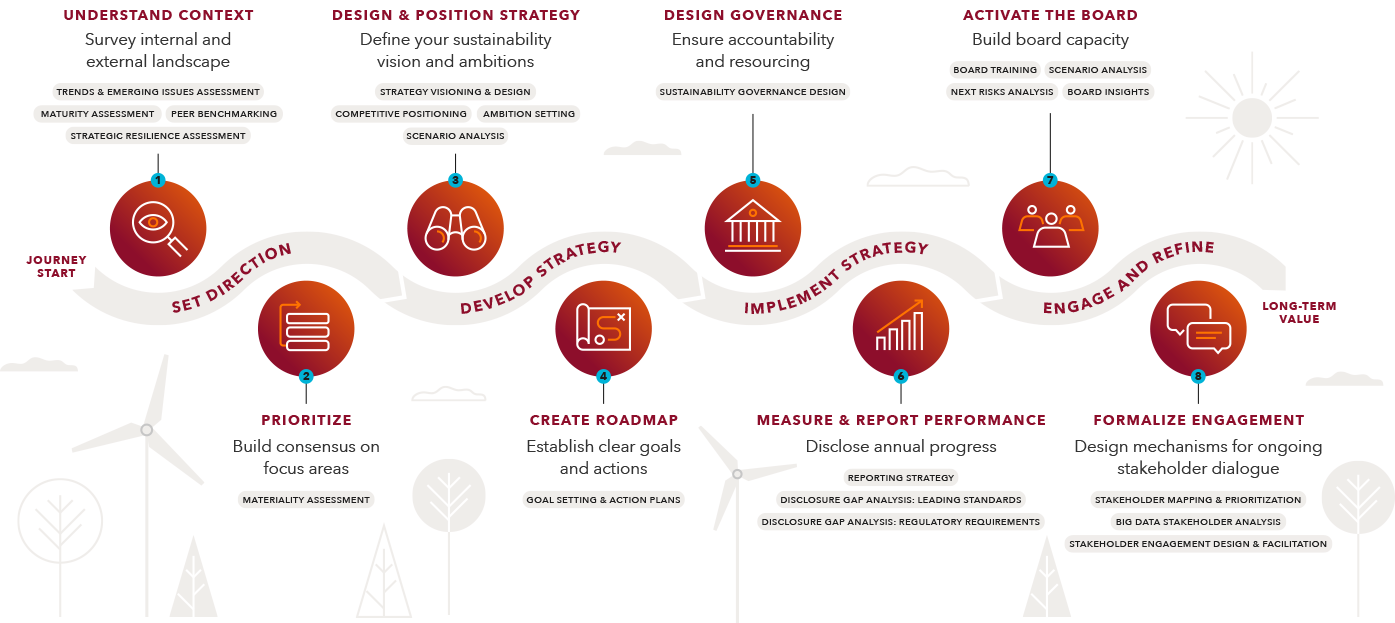
Key Points
- Collaboration tends to be seen as a separate activity from corporate sustainability strategy, whereas it’s a core part of the strategy toolkit.
- Achieving sustainability outcomes requires both ambitious business transformation across operations and collaborating with other stakeholders to address global challenges.
- BSR provides key recommendations on how to choose and achieve impact by participating in sustainability-related collaborations.
When discussing BSR’s Collaborative Initiatives with members, we are often asked “What is the value proposition? Is it worthwhile?”
The immediate value proposition, or the “service” that collaboration can offer in the near term is an insufficient measure of the deeper strategic value that comes from engaging in collaboration for sustainable development. Collaboration is the only means by which companies can meet their long-term business and sustainability goals, where these goals cannot be achievable independently.
Nonetheless, we frequently see participation with short-term aims, and left off longer term corporate strategic roadmaps.
At BSR, we believe that the lasting value of contributing to collaborative efforts is like that of a Research & Design function: when done well, the catalytic mix of co-investment, collective creativity, problem-solving, and cross-sector relationship development can lead to entire systems change that enables markets to continue to thrive, more sustainably.
For example, members of Action for Sustainable Derivatives initially came together to improve transparency of palm oil derivatives down to farm and field level, and due to the strength of the collaboration have expanded its ambition to create deeper impacts, e.g. launching a social impact fund in partnership with strong local non-profits, with momentum toward further innovation in the future. Examples of the application of collective muscle for systemic leverage are evident across multiple collaborations such as RISE (Reimagining Industry to Support Equality), a recent merger of collaborative initiatives working for female equality in the textile industry.
Companies are petitioned every day to join new partnerships and collaborations, and it can become overwhelming. How might a sustainability team make strategic decisions about which collaborations to join, and justify the time and expense? And how can the company tap into the deeper, strategic value that collaboration can add to their sustainability journey?
We encourage every company to consider collaborative opportunities across the entire sustainability strategy journey. The following chart includes key considerations for a sustainability team across each step to inform, align with, and contribute to their broader strategy through collaboration.

Key recommendations and considerations for high-impact collective action when setting sustainability goals include:
Set Direction
Are we part of the right collaboration? Are there ways to leverage collaborations to achieve greater influence on issues and risks where the company has limited influence?
-
Consider tapping the expertise of your collaboration to continuously scan for emerging sustainability risks and opportunities to better understand the current environment.
-
Don’t overlook the value of industry or issue area working groups that explore emerging issues—these can be valuable, and ongoing sources of information for corporate strategic planning.
-
Encourage the company’s representatives to meet on a regular basis to share learnings and updates, inform internal teams on agreements made, and brainstorm new approaches.
Develop Strategy
When setting sustainability goals, are we thinking individually or systemically? How might we better align our individual corporate goals and targets with that of the collaborative initiative? Do we have a rubric to evaluate and prioritize the collaborations that we participate in?
-
It is tempting to establish sustainability goals that are achievable by the company alone, with little external engagement required. But where business transformation is required, systemic engagement is needed as well.
-
Consider offering collaborations that directly align with the company’s sustainability strategy more time, resources, and expertise, to establish ambitious goals, and to accelerate shared objectives.
-
Study a collaboration’s theory of change, which points to its long-term objectives and the means through which the collaboration expects to achieve them. Consider how the company’s sustainability strategy might complement or even directly contribute to the collaboration to progress the collective effort. (If a collaboration is not able to articulate its theory of change, this may be an indication that it is not a strong partnership).
Implement Strategy
Are we assigning the right leaders to participate in collaborations, and equipping them to make decisions on behalf of the company? Are we resourcing critical collaborations sufficiently to meet our shared goals? How might we establish accountability for collaborative results?
-
Assign a senior-level decision maker to lead engagement with priority collaborations. Ensure that the company has multiple contacts with critical collaborations, sharing learning and supporting the company to maintain relationships through periods of team transition.
-
Acknowledge the value of relationship building within the collaboration process, and the value the relationships can bring to the company in the long term. Make time and resources available for in-person convening and in-depth relationship development and work.
-
Proactively funnel resources, expertise, and autonomy in decision-making to the company’s collaboration leaders, to enable them to move fast, react in real time, and drive forward your shared goals.
Engage and Refine
Which collaborative efforts are working? Are there any sustainability issues that we are not yet collaborating on, and if so, why not? Are we actively engaging in our collaborations to provide feedback on their strategy?
-
A company may engage in many different kinds of collaborations and partnerships, knowing that a few will lead to outsized impacts, while others will not be as successful. A strategic approach to collaboration includes active portfolio management to responsibly prune those that no longer meet the company’s needs, and to add fuel to those that show promise.
-
Participate in providing meaningful and timely feedback to the collaboration’s secretariat, ensuring they are well-informed about the company’s needs and ideas for impactful activities.
Collaboration is an impactful tool that many companies are only in the early stages of understanding how to use strategically, not only to achieve their own goals but also to transform a wider system. Having a well-defined collaboration strategy and investing in the skills of employees to participate in collaborative initiatives in ways that maximize a company’s investment, are key factors for success.
Please contact the Collaborations team at BSR with any queries about how we can assist you in integrating collaboration into your corporate sustainability strategy.
BSR’s latest sustainability insights and events straight to your inbox.
Topics
Let’s talk about how BSR can help you to transform your business and achieve your sustainability goals.








